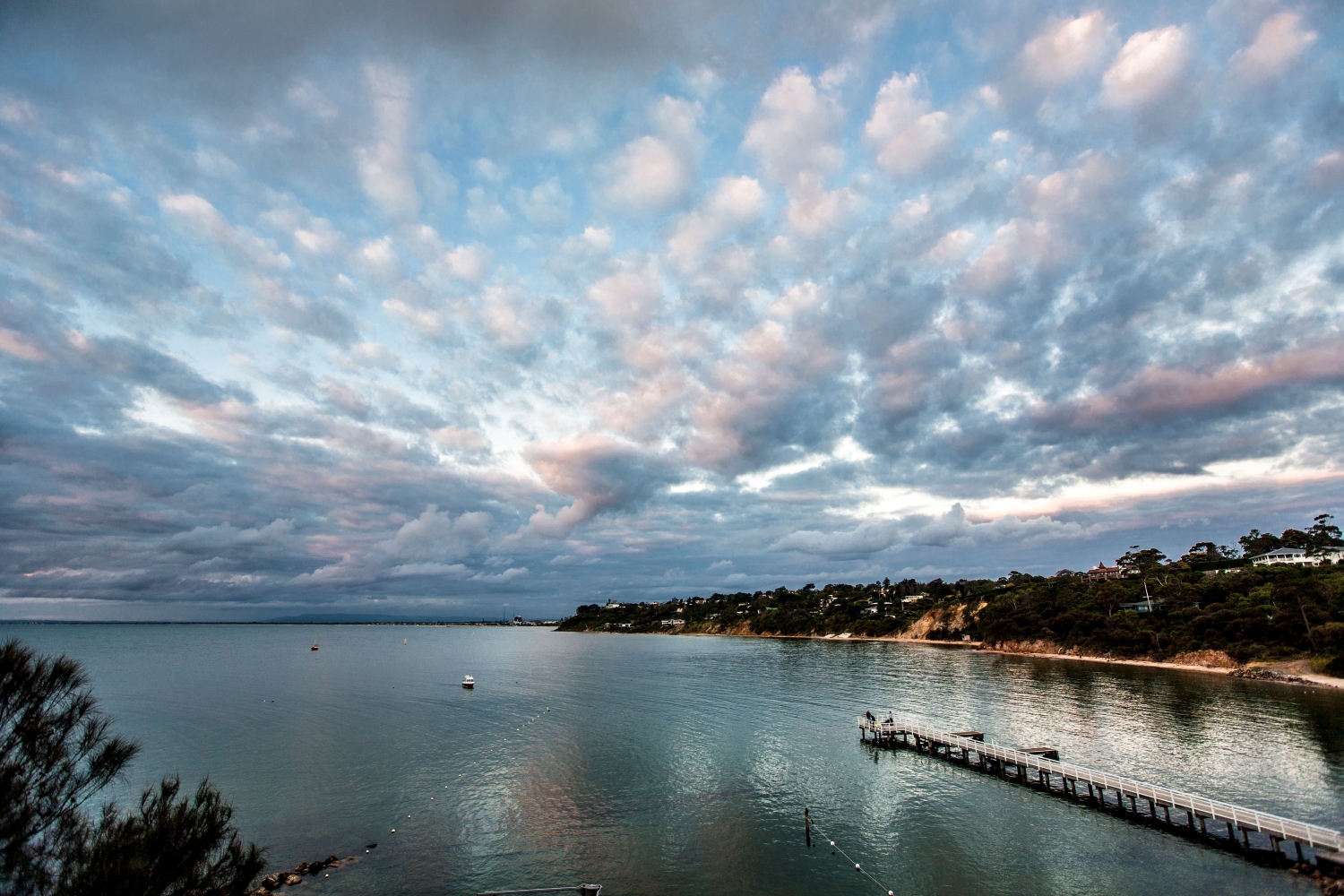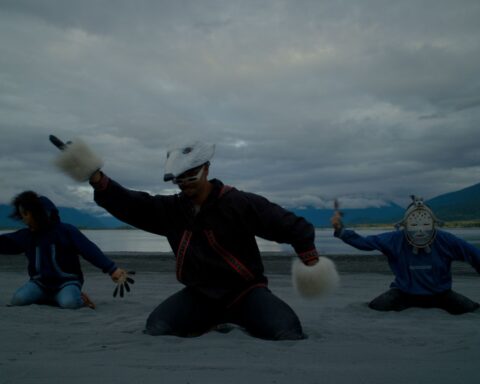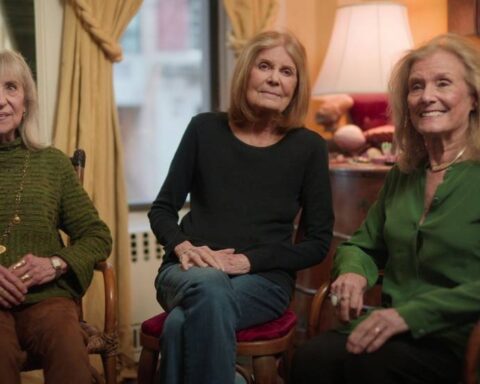The greatest advance in Canada’s cultural events over the past decade, in my opinion, has been the growth of introductory Indigenous land acknowledgments. At last, the majority settler society, of which I’m a part, has to think and care about the ongoing heritage and contributions to North America from its original peoples. This year’s TIFF outdid itself with perhaps the finest land acknowledgment I’ve seen on cinema screens, one that celebrated the Indigenous people who dwell in the area we now call Toronto, with gorgeous images by the iconic filmmaker Alanis Obomsawin.
Alanis, or Madame Obomsawin if one chooses to be formal, is from the Abenaki nation but her status as the most notable Indigenous filmmaker has made her a mentoring and mothering figure for people of many nations throughout the continent. As editor of POV, I have asked for pieces to be written about her from an Indigenous perspective for years. Understandably, those articles, including one in this issue by Erica Commanda, are deeply respectful of Alanis as an artist and leader in the ongoing Indigenous revival, which is finally reaching a crucial importance in our political discourse.
It’s important for us settlers to consider Alanis’ contributions, too. If your work is strong enough—and surely Alanis’ is—then a response from others besides your own culture, is warranted. In my case, I’ve been lucky enough to know, write about and present Alanis’ work for over 30 years and have watched her career and oeuvre grow during that time.
What’s always struck me is her deep love of children. It’s there from her first film, the charming animation Christmas at Moose Factory (1971), through the devastating tale of adolescent suicide Richard Cardinal: Cry from a Diary of a Metis Child (1986) to the recent tragic story of Jordan River Anderson: The Messenger (2019). Her fierce pride in the Indigenous fight against the Canadian political system was most brilliantly revealed in the masterpiece about the Oka insurrection, Kanehsatake: 270 Years of Resistance (1993), in which she memorably went behind the lines to shoot what could have been a bloody conflict and was certainly a terrifying and sobering one. Alanis is a great storyteller who feels that it’s essential to tell the history of what’s happened to Indigenous peoples over centuries of settler domination of their lands. Not only does Kanehsatake do this, but it’s readily evident in Incident at Restigouche (1984), Trick or Treaty? (2014) and the perfectly titled film Is the Crown at War with Us? (2002). Most of all, let’s enjoy the beauty of Alanis’ vision, which is so evident in her films.
The image which this text accompanies, and which was included in the land acknowledgment at TIFF, is gorgeous: the sky shifting from blue to grey over water that pours towards a vast horizon, with the trees and land giving one a border for the eye to concentrate on the natural world before it. Alanis’ films have opened up a world of honour, tragedy, and pride to this observer, who can offer his thanks in reply.














